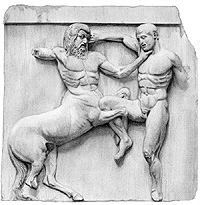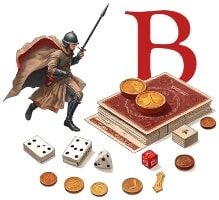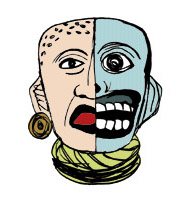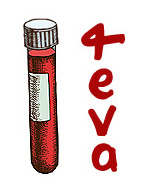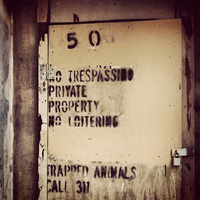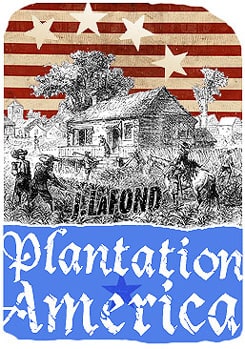The Chaos Phase of battle ends in Panic when certain conditions are met.
-1. If, at any time, neither player holds cards in hand, then the Chaos Phase gives way to the Panic Phase.
The Rout Deck is kept separate and not counted.
Once Panic has taken hold, then Army Morale is checked after every simultaneous command card draw. There are no more hands. Command cards are now pulled and drawn and played in the order determined by their suit and value.
During Pathos and Chaos, the cards in hand represented a battle plan being in play. Once Panic has set in, then no hand may be held, so morale is checked every round. This represents the break down in command communication and the devolving of initiative upon brigadiers, colonels, majors and captains.
Army morale may be restored, in part, through special cards, during the Panic Phase, and only during the Panic Phase. It may also be restored, at any time by the restoration or identification of units, prior to, or during, the Panic Phase.
Army morale is checked after all cards in a round have been played, so may flux up and down during that process.
When one or both armies are determined to have broken, then Panic play ends and the Rout Phase begins.
Play may not go directly from Chaos to Rout, as there must be at least one simultaneous card draw and play once both players have begun a round without a hand, thereby initiating Panic, which could be a phase that lasts but one round or many.
If the Chaos Phase has ended, because a round began with neither player holding a card hand, then the Panic Phase continues until:
-1. one or both armies are broken
-2. one army has no identified units upon the board
-3. one player has moved his guard unit with the quarter token off the board.
If these conditions are met, then play goes to Rout, which is essentially a method for determining the level of victory and defeat.
During the Panic Phase, even if a player is issued a hand of cards due to drawing a king, all of those cards must be played then. No cards may be held in a hand during the Panic Phase. Some of the nastiest fighting will occur here.
…
Pushing Units
During and only during the Panic Phase, units may be pushed. Pushing a unit is to give it consecutive tasks in the same round, activating it a second time in the same round. A unit that is pushed loses a strength point and must make a morale check. Pushed units may be restored by normal means as described in Chaos.
The Panic Phase is a time for a broken army to try and get units off the board, if his plan is to withdraw in good order and live to fight another day.It is also a time to move units in such a way as to limit the level of victory attained by the enemy. This includes, demoralizing, breaking and eliminating enemy units in order to avoid being wiped out by a pursuing force. In the American Civil War, the massive armies of foot and small horse forces and the fact that so many leaders were killed due to the lethality and range of minieball technology, resulted, usually, in both forces being too exhausted to pursue even a broken army. Essentially, war at the apex of black powder technology, was so nasty, that both armies, even the winner, would be broken according to earlier Napoleonic ideals of battle efficacy.
If the deck is depleted during or before the Panic Phase, it is reshuffled and continues in use, with a single discard placed face up as the discard, as in the begin of rummy play.
…
Cards and Panic
During the Panic Phase, any card that is drawn must be used immediately.
Jokers & Panic: During the Panic Phase, drawing a joker for issuing commands or resolving combat permits the drawing and playing of any single card from the discard pile.
Only Aces and Kings effect Army Morale during Panic. These effects are in addition to command and combat effects. An ace or king drawn during combat resolution does also have the following effects on army morale and unit restoration and identification.
Ace of Spades: + 8 army morale, restores guard unit from broken. If the guard unit has been eliminated, the guard token may be placed on any static or active unit. An active unit so identified has additional morale, as it has two tokens. [1]
Ace of Hearts: + 7 army morale, awards a dime token to be placed on any unit
Ace of Diamonds: + 6 army morale, awards a nickel to be placed on any unit.
Ace of Clubs: + 5 army morale, awards 2-3 [heads or tails] pennies to be placed on a single active or static unit, turning it into a fanatical unit of “revolutionary” character. If this unit survives the battle, and a campaign is being played it should be promoted. [2]
Multiple coins may be placed on a unit. This will be covered in Campaign play at the end of Rout and in historical options.
Queens and Jacks have special roles in the Rout Phase. During the Panic Phase these cards simply function as command or combat cards.
In the Panic Phase, the drawing of any king from the deck, or taken with a joker out of discard, will have effects beyond normal command. These effects of drawing a king on combat and morale only take place in the Panic Phase. The normal command use of the king card is maintained. The following effects are additional.
The King of Spades grants guard status to any one unit and increases army morale by +15.
The King of Hearts, the “Suicide King” restores all dime and nickle units to heads. Also, every battalion within range of an enemy unit MUST advance into close combat. These advances cost no command points. There is no increase in army morale for playing this card during Panic.
The King of Diamonds doubles the fire power of every battalion and battery, for this turn. If these units are in range of an enemy unit, they MUST fire instead of move, move and fire or fire and move. This firing costs no command points. After this is done any batteries which fired are eliminated, representing the spiking of the guns in despair after the expenditure of ammunition. There is no increase in army morale gained by playing this card during Panic.
The King of Clubs restores army morale by +10, restores all penny units to heads, stops all penny units from routing, and identifies all static units to heads or tails depending on the coin toss.
Army Morale
An army’s starting morale is determined by adding the nickles and dimes.
That value is the Breaking Point.
After any round of command and combat during the Panic Phase, in which one or both armies have a morale level less then their starting morale, or Breaking Point, then that force has broken and play moves to the Rout Phase, where rout mechanics are explained.
Token eliminated +1
Company eliminated +2
Troop eliminated +3
Battery eliminated +4
Battalion eliminated +5
Guard counter eliminated + 10 [It is risky to have guard troops and companies instead of battalions.]
Guard Token eliminated +15 [Broken.]
The concept here is that morale is provided by the loyalists and professionals and most severely impacted by the loss of command confidence.
…
Notes
-1. Advanced play options will include aggregate unit identity. This represents the commander moving his flag or standard to another unit.
-2. Unit promotion is covered in Rout.
-3. Campaign and Multiple Army options are covered at the end of Rout.


